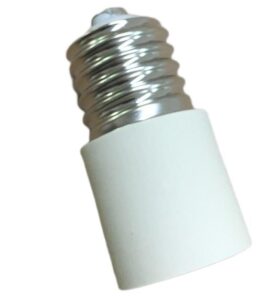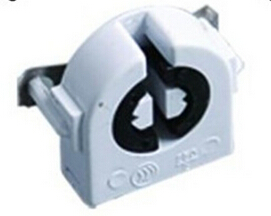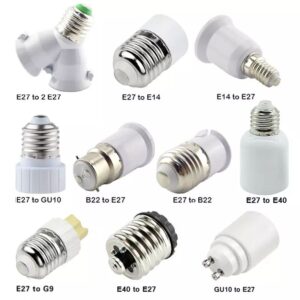Turning a regular light fixture into a pendant light can be daunting, especially if you’re not very familiar with electrical work. Messing around with wiring and fixtures you don’t understand can lead to frustration, improper installation, and safety hazards. But, with some knowledge, tools, and a step-by-step approach, you can safely and effectively convert a standard ceiling fixture into a modern pendant light.
Here are the steps to turn a regular light fixture into a pendant light. Turn off the power, remove the existing fixture, put in the pendant light kit, and connect the wires.
This guide will take you through the whole process from getting the tools you need to install the new pendant light safely.

Tools and Materials You’ll Need
Before starting, it’s important to gather all the necessary tools and materials to ensure a smooth conversion. Having everything prepared beforehand will make the installation process quicker and more efficient.
Here’s a list of essential items:
- Pendant light kit (ensure it matches your desired style and is compatible with your ceiling box)
- Screwdriver (both flathead and Phillips, depending on your fixture)
- Wire connectors (also known as wire nuts)
- Electrical tape
- Voltage tester (to check for live current)
- Step ladder (for easy access to ceiling fixtures)
- Measuring tape (for adjusting pendant height)
- Pliers (if needed for wire handling)
Make sure to purchase a pendant light kit that fits your style and works with your existing electrical box. Whether it’s a sleek modern pendant or a more rustic design, the kit should come with all the components necessary for a successful installation.

Turn Off Power and Prepare the Work Area
Safety is the most important aspect of any electrical project. Before beginning, turn off the power to the light fixture at your home’s circuit breaker. It’s critical to ensure no electricity is flowing to the light fixture you’re about to work on.
To verify that the power is off, use a voltage tester. This tool will confirm that no live current is present, keeping you safe from potential electric shocks. If you’re not familiar with electrical work, it’s worth taking the extra step to double-check that the power is indeed off.
Clear the area below the fixture so you have a clean, open workspace. You’ll need a step ladder to comfortably reach the ceiling fixture. Make sure the ladder is sturdy and placed on level ground to avoid any accidents during the installation.
Remove the Existing Light Fixture
Once the power is off and your workspace is prepared, you can begin removing the existing light fixture. Most ceiling fixtures are held in place with screws or a mounting bracket. Using the appropriate screwdriver, carefully unscrew the fixture from the ceiling.
After removing the screws or fasteners, gently lower the fixture. You’ll see wires connecting the fixture to the ceiling box: typically a black (live) wire, white (neutral) wire, and a green or bare copper (ground) wire. Carefully unscrew the wire nuts that secure these connections, but make sure to note which wire corresponds to each connection. You can take a picture of the wiring setup for reference when reconnecting the new fixture.
After the wires are disconnected, remove the old fixture completely, leaving just the wiring exposed.

Install the Pendant Light Kit
Now that the old fixture is removed, it’s time to install your new pendant light. Most pendant light kits include a mounting bracket, a pendant cord or chain, and necessary hardware to complete the installation.
- Secure the mounting bracket to the ceiling box. The bracket will act as the main support for your pendant light. Make sure it’s firmly attached to avoid any movement or instability.
- Connect the wires from the pendant light to the existing wires in the ceiling. In most cases, you will attach the black (live) wire from the ceiling to the black wire on the pendant light, the white (neutral) wire to the white wire, and the green or bare copper (ground) wire to the grounding wire in the ceiling box. Use wire connectors (wire nuts) to secure these connections tightly.
- After securing the wires, gently tuck them back into the ceiling box. Ensure everything is neatly organized to avoid interference when attaching the pendant fixture.
Be cautious when handling wires, and double-check that all connections are properly secured and insulated with electrical tape if necessary.

Adjust the Pendant Height and Secure the Fixture
One of the most appealing features of a pendant light is its adjustable height. Before fully securing the fixture to the ceiling, take the time to adjust the pendant cord or chain to your desired length. This is important for both functionality and aesthetics.
If you’re hanging the pendant over a dining table, kitchen island, or workspace, measure the distance from the surface to ensure the light is at an optimal height—typically between 28 to 34 inches above the surface. This ensures the light provides adequate illumination without hanging too low or blocking the view.
Once you’ve determined the ideal height, secure the pendant fixture to the mounting bracket you previously installed. Tighten any screws or fasteners to make sure the fixture is stable and properly aligned.
Test the Fixture and Final Adjustments
With the fixture securely installed, the final step is to turn the power back on and test the light. Head to the circuit breaker and restore power to the light fixture’s circuit.
Once the power is back on, turn on the switch and check whether the light functions as expected. If the light doesn’t turn on, it may be necessary to revisit the wiring connections or consult an electrician for further troubleshooting.
After confirming the pendant light works, you can make any final adjustments to its height, positioning, or angle to achieve the perfect look for your space.

Final Words
Converting a regular light fixture into a pendant light is a great way to update your space and add a modern look to any room. You will be able to convert your light fixture to a pendant light by following these steps. Turn off the power, remove the fixture, put in the pendant light kit, and make sure you hook up the wires correctly.
Pendant lights are great for updating the look of your home or creating a lighting solution. If at any point you feel uncomfortable with the electrical part, make sure to get a professional to help you.













